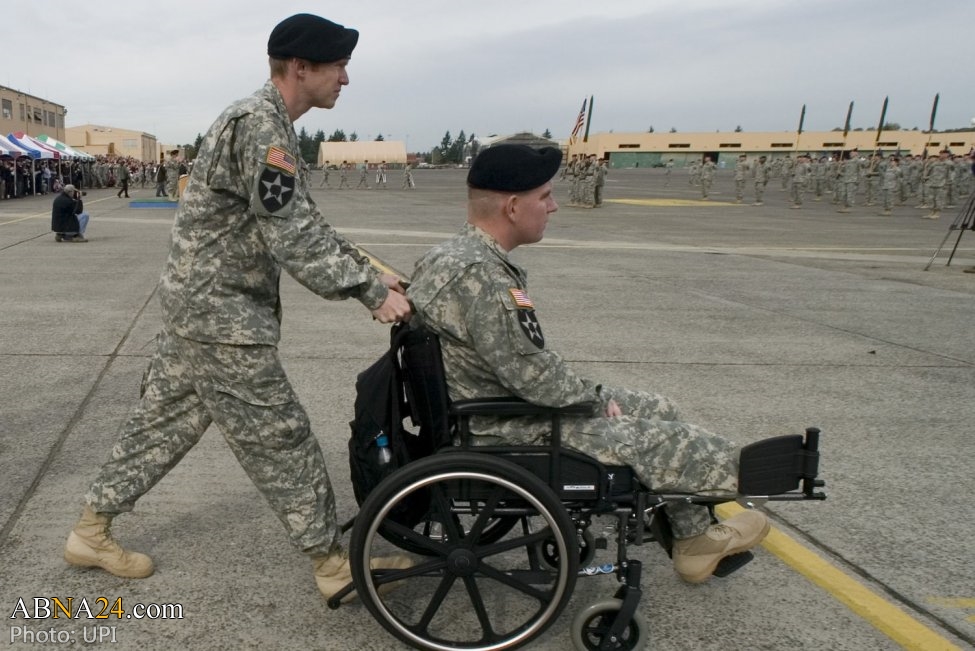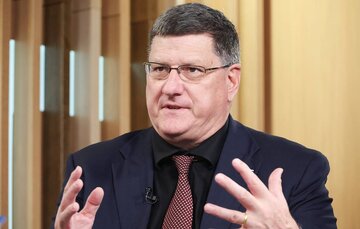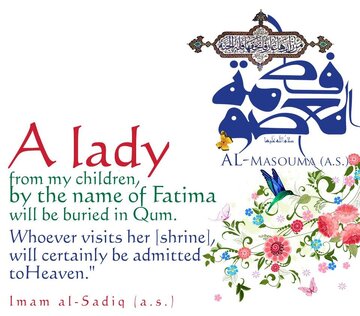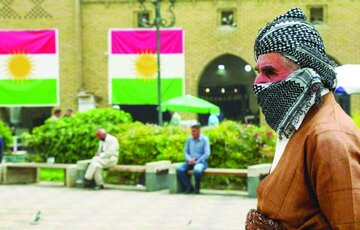AhlulBayt News Agency (ABNA): As we are nearing the end of the year, the US troop “withdrawal” from Iraq will make headlines again. December 31 was set as the date for the US withdrawal from Iraq. However, no troops will be actually withdrawn. The occupation forces will only be rebranded. The very same combat troops will be given an “advisory” role and not a single soldier will be withdrawn. This has already been confirmed by Pentagon officials to The New York Times saying that the withdrawal would mostly take place on paper. Looking back at how US troops returned to Iraq in 2014 after being expelled in 2011 by the Iraqi resistance will reveal that there never has been an intention to withdraw troops from Iraq.
In 2011 the Iraqi resistance forced the US occupation to leave Iraq. The US was militarily defeated in a protracted war. Another factor that legitimized the resistance and weakened the US' position further was the fact that the US government failed to reach an agreement with the Iraqi Maliki government to keep US soldiers in Iraq.
This development was quickly reversed in 2014 when multiple provinces in Iraq fell to the internationally supported and transnational organization the "Islamic State in Syria and Iraq" (ISIS). While Baghdad was threatened to be overrun by ISIS, the US declined to provide Iraq with weapons - already paid for by the Iraqi government - to defend itself. The chaos in Iraq was used to pressure the Iraqi government to “invite” US troops to provide air cover while ground troops would enter the country as trainers and advisers. The presence of US troops had no legal foundation in the absence of a Status of Forces Agreement (SOFA). After multiple war crimes and violations of Iraqi sovereignty, the targeting of Iraqi security forces, culminating in the extrajudicial killings of Abu Mahdi Al Muhandis and Qasem Soleimani, Iraqi Prime Minister Adel Abdel Mahdi rescinded the invitation and formally requested all foreign troops to withdraw from Iraqi soil. To further strengthen this position, the majority of the Iraqi parliament voted in favor of a corresponding motion requesting foreign troops to leave Iraq.
Authorizing the US presence in Iraq is informal. In fact, the invitation could be retracted by the Iraqi government at any moment.
The US refused to withdraw its troops and went as far as threatening Iraq with sanctions. While still in office, former US President Donald Trump stated that they would “charge them sanctions like they've never seen before, ever. It'll make Iranian sanctions look somewhat tame”. This is to be read in the context of the historical precedent of the '90s when the US imposed extreme sanctions that killed more than a million Iraqis. Moreover, this would also mean Iraq would lose access to the Iraq Oil Proceeds Account at the Federal Reserve Bank of New York which holds all proceedings from Iraqi oil sales. These threats do not fall short of threatening Iraq with starvation.
Marketing
The refusal to end the occupation of Iraq is a bipartisan stance that was once again demonstrated by the latest comments made by US General Frank Mackenzie. In an interview with Associated Press on December 10, Mackenzie stated that the United States will keep the current 2,500 troops in Iraq for the foreseeable future. This would mean that the troop withdrawal at the end of this year would be "completed" without withdrawing a single soldier. As mentioned before, the occupation will only rebrand its forces after December 31. Later in the aforementioned interview, General McKenzie said he believed Islamic State militants would continue to be a threat in Iraq and that the group would “keep recreating itself, perhaps under a different name”. His statement served to prophecize or rather announce (given the ambivalent relationship between the US and Gulf-funded Wahhabi terror groups) that the same[1] re-branding strategy would be passed on to the Islamic state.
The re-branding of a military force is an old propaganda trick that is often employed by the US and its proxies in conflicts throughout the region. Entering Vietnam as “advisors” only to unleash a full-scale war is perhaps the most well-known historic example. More recently, in 2017, U.S. Army General Raymond Thomas commented the following on the YPG changing their name to the Syrian democratic forces:
“We literally played back to them: ‘You have got to change your brand. What do you want to call yourselves besides the YPG?’ With about a day’s notice, they declared that they are the Syrian Democratic Forces.”
He proceeded to say: “I thought it was a stroke of brilliance to put democracy in there somewhere. But it gave them a little bit of credibility.”[1]
This strategy was extended to other terror groups such as the Islamic State offshoot Jabhat al-Nusrah that was rebranded multiple times according to the requirements of shifting strategic objectives. Rebranding Jabhat al-Nusra was needed to pave the way for NATO member Turkey to continue supporting this group in its battle against the Syrian government. Since Jabhat al-Nusrah was officially considered a terror group, a new brand was needed. More recently, the leader of the terror group, Abu Mohammed Al-Jolani, was interviewed by PBS wearing a slick suit in an attempt to change his public image. Around the same time, former US special envoy to Syria James Jeffry said that Jolani’s organization was “an asset” to the US strategy in Idlib[2].
CENTCOM
The comments made by General McKenzie should be analyzed and given their proper weight. Being in charge of the US Central Command (CENTCOM) makes him the top US Commander for West Asia. Even if the US would significantly or completely draw down its forces in Iraq, this would not necessarily mean a reduction in the capacity of the occupation in Iraq. This has to do with the fact that the US troops in Iraq are part of and administered by the US Central Command. Based in Tampa Florida, CENTCOM has a forward headquarters in Al Udeid Air Base in Qatar and commands the US military in the whole region. When created in 1983, it took over the responsibilities of the Rapid Deployment Joint Task Force (RDJTF). The creation of this force was in the context of cold war-related “threats” to vital interests. US vital interests were described as a process that "helps maintain regional stability and the Gulf oil-flow westward[3]". This meant controlling the oil, markets and protecting pro-US regimes. The RDJTF was created as a highly mobile force.
“It was not designed to have specific forces but to draw in times of crisis from a central pool of resources depending on the nature of the threat, geographical location and time available for deployment[4]”.
This means that even after a troop reduction in Iraq, the troops within the borders of Iraq would serve as a forward base for CENTCOM to rapidly deploy its forces too. Whenever the US sees its interests in Iraq threatened, it could deploy its forces from the bases in the surrounding countries to Iraq and vice versa. The US government claims there are around 2500 US troops present in Iraq, the troop deployment could however easily be expanded by bringing in troops from any neighboring country that hosts US Bases such as Qatar that hosts over 11,000 troops, or Kuwait that hosts 13,000.
The former is demonstrated in the “Defense budget overview” of 2020, published as part of the President’s Annual Defense Budget by the United States Department of Defense. In the report, it is estimated that in 2019, around 5,765 US troops would be deployed in Syria/Iraq. It is interesting to note that the report does not differentiate between Syria and Iraq. Both are considered as one single deployment. Even more striking is that the report estimates the “in-theater” support (troops) at 59,463.
Later in the report, the term “in-theater” support is explained: “Funds requested in this category provide reinforcement in case of critical combat and other support for personnel in Afghanistan, Iraq, and Syria that come from units and forces operating outside the battlefield. This category also includes funding to support other operations conducted outside Afghanistan, Iraq, and Syria[5]”.
This means that almost 60,000 troops were part of the operation in Afghanistan (as of now, the 15,000 troops that were in Afghanistan are stationed elsewhere), Iraq, and Syria.
Since Iraq is an area of responsibility of CENTCOM, neither the number of troops nor the brand of these troops would reflect the actual size and capability of the occupation in Iraq. CENTCOM ignores the borders of nations and moves troops and hardware in and out of countries without consulting the respective governments. Therefore, the Axis of Resistance was right when it set a goal that consists of expelling the US from West Asia.
Conclusion
Today, the US strategic objectives still focus on controlling the oil, markets and trade routes in West Asia. But now the stakes are different: the emergence of China and Russia in the region as economic and military partners of local countries has changed the nature of the conflict. The 2018 US National Defense Strategy (NDS) states the great-power competition with China and Russia as its main military objective. Accordingly, the Chinese Belt and Road Initiative (BRI) is considered a strategic threat. This explains why the US is focused on controlling the border areas between Iraq and Syria, as this zone is an important part of the BRI, and it would be indispensable in a West Asia free of US dominance.
Whether the US will stay or be expelled from Iraq will not be the outcome of diplomatic talks held between the Iraqi government and the US. The US will be expelled from Iraq by the Iraqi Resistance and its regional partners in the Axis of Resistance. During the first phase of the occupation from 2003 to 2011, a young inexperienced Iraqi Resistance managed to inflict heavy losses on the US occupation, forcing a withdrawal from the country. If the US refuses to leave Iraq today, it must face a more experienced and better-equipped resistance.
References
[1]https://www.reuters.com/article/us-mideast-crisis-usa-ypg-idUSKBN1A62SS
[2] https://www.pbs.org/wgbh/frontline/article/abu-mohammad-al-jolani-interview-hayat-tahrir-al-sham-syria-al-qaeda/
[3]John Clementson "Mission Imperative: The Rapid Deployment Joint Task Force", Armed Forces, July 1983, pp. 260 - 265 and August 1983, pp. 304 - 308
[4]Antill, P., Central Command, United States: CENTCOM (PETER ANTILL), http://www.historyofwar.org/articles/concepts_centcomlong.html
[5]https://comptroller.defense.gov/Portals/45/Documents/defbudget/fy2020/fy2020_Budget_Request_Overview_Book.pdf
/129





